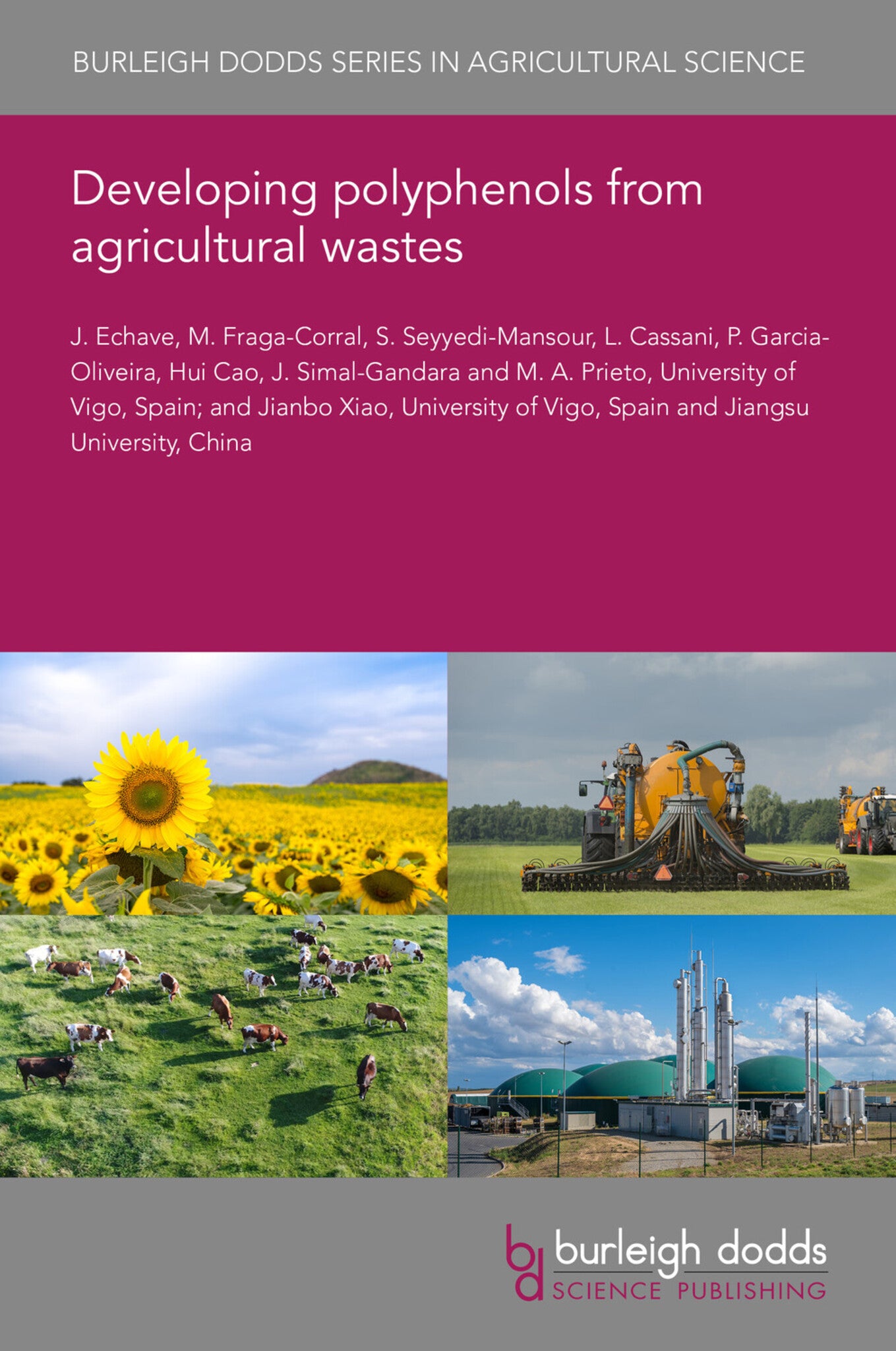We're sorry. An error has occurred
Please cancel or retry.
Developing polyphenols from agricultural wastes

Some error occured while loading the Quick View. Please close the Quick View and try reloading the page.
Couldn't load pickup availability
- Format:
-
08 January 2024

Large volumes of organic waste are generated from growing, harvesting and processing crops. These organic bioresidues contain large quantities of diverse bioactive molecules, including phenolic compounds. These compounds have significant antioxidant and health-promoting properties. A more sustainable approach can be taken to manage organic agricultural wastes to obtain phytochemicals with numerous potential applications. The chapter assesses the types of phenolic compounds, potential sources from organic waste, beneficial properties and the methods for extraction for commercial use.

TECHNOLOGY & ENGINEERING / Agriculture / Sustainable Agriculture, Sustainable agriculture, TECHNOLOGY & ENGINEERING / Agriculture / Agronomy / Crop Science, TECHNOLOGY & ENGINEERING / Agriculture / Organic, TECHNOLOGY & ENGINEERING / Environmental / General, Biofuels, Agricultural science, Agronomy and crop production

- 1 Introduction
- 2 Phenolic compounds: flavonoids
- 3 Phenolic compounds: non-flavonoids
- 4 Types of organic waste containing phenolic compounds
- 5 Nutraceutical properties of polyphenols and potential applications
- 6 Extraction methods: conventional solidliquid extraction technologies
- 7 Extraction methods: green technologies
- 8 Comparing extraction techniques
- 9 Conclusion
- 10 Acknowledgements
- 11 Where to look for further information
- 12 References



